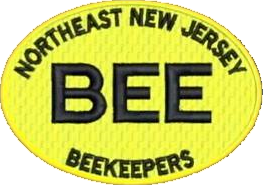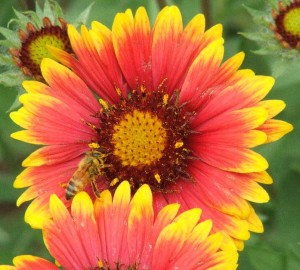Beekeeping in October
By John A. Gaut
The bees have been working some remaining golden rod and the aster has been in full bloom in my area. But it has been dry so there is not much nectar. Most hive weights have been slowly increasing; I have had to add some sugar syrup to help. The colonies are organizing the hive for the winter, storing honey and pollen. (I continue to be amazed how consistently a colony arranges the honey to the top and outside, pollen in the bottom near the center and a brood nest in the center bottom part of the hive.) The field force will continue to bring in pollen and any nectar they can find this month. The colonies will reduce brood rearing as the days get shorter and cooler. The “winter bees” are emerging; winter survival will depend on their health and numbers.
To survive the winter, the colonies should be strong and have a vigorous queen. Three other important considerations are:
1. Adequate food reserves, both honey and pollen. The hive should have 60 pounds of honey and at least the equivalent to 4 frames of pollen (bee bread). The colony will consume the honey to maintain a cluster temperature and also need the protein from the pollen to stay well nourished. In the middle of winter, the colony will start consuming both honey and pollen when they start brood rearing.
2. Low mite parasitism; less than 1% is ideal. Mites suck the bee’s hemolymph (blood) and transmit viruses causing the colony to suffer a virus epidemic in the middle of winter. One last mite count now (after any treatment is removed) will let you know if your mite treatment program was successful. Treatments vary in effectiveness. You can NOT assume that your colonies are OK since you treated; you need to test and verify the treatment was successful!
3. A dry and wind protected hive. A small top entrance helps to ventilate moisture from the hive and provides an alternate entrance if the bottom entrance is covered in snow. A piece of insulation between the inner cover and outer cover can prevent condensation on the underside of the inner cover (condensation raining on the cluster can kill the colony). If a screened bottom board is used, the IPM board should be in place. Too much air moving through the hive will cause the colony to consume more honey to maintain the cluster temperature. Insulating the sides of the hive also helps reduce air infiltration and can reduce heat loss, especially on those windy, sub-freezing February nights.
Most of the colonies I have inspected during September and early October are doing well. There are many variables; the most important is mite counts. If the mite counts are low, the colonies are able to adjust to most of the other variables and pressures. I have found some colonies that have high mite counts though. Grrrr! These are typically the stronger colonies and mites were under control a month ago. They look very healthy now but the alcohol wash shows they will suffer if I do not treat for the mites. Why did the mite levels jump up in a month? Research is showing other colonies collapsing under heavy mite loads are the reason. Untreated colonies are the nuclear bomb of beekeeping. The strong colonies rob out the collapsing colonies bring back mites. And the bees in the collapsing hive will abscond and enter other hives in the area. I’ll reapply ApiVar to the colonies that have more than 1% mite levels. Check your colonies. Please don’t create a nuclear bomb for the other beekeepers!

Northeast New Jersey Beekeepers Association
A division of New Jersey Beekeepers Association
